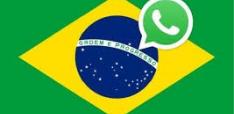Trump’s handing of Latin America to China

Alfredo Toro Hardy addresses how Trump is delivering Latin America to China in a silver plate.
It looks almost inevitable that Trump’s bullying of America’s allies and friends, within the context of MAGA politics, can only benefit that country’s main strategic and economic contender: China. While the U.S.’ allies in the Indo-Pacific may have to find accommodation with Beijing, amid Washington’s unreliability, Europeans will have to seek common grounds with China to compensate for the United States’ increasing aggressiveness. All around the world, the bully will have to be restrained by counterbalancing it with the only available alternative. Within this context, the case of Latin America becomes a particular one.
Historical background
Indeed, from the very beginning of its independent life, the U.S. set it sights on what was later to be called Latin America, as a natural space for projection. According to Brian Loveman:
“Thomas Jefferson worried in 1786 that Spain might be too weak to hold onto to its colonies ‘till our population was sufficiently advanced to gain it from them piece by piece’” (Loveman, 2016).
This assertion undoubtedly required much self-assurance as, at that time, the Spanish colonies showed great strength, at least on the surface. This same sense of self-assurance was on display in 1823, when President James Monroe warned the all-powerful European powers that the American continent was off-limits to their imperial appetites. According to Henry Kissinger:
“The Monroe Doctrine (…) Daringly, warned the European powers that the new nation would go to war to uphold the inviolability of the Western Hemisphere (…) America was at one and the same time turning its back on Europe, and freeing its hands to expand in the Western Hemisphere” (Kissinger, 1994, pp. 45-46).
This expansion began in 1845 when President James Polk manipulated the independence of the Texas’ colony from Mexico, to declare war on his southern neighbour. As a result, the U.S. considerably enlarged its territory, while reducing Mexico’s by half.
The year 1898 allowed for a further step in the same direction, when President William McKinley declared war against another weaker country: Spain. This translated into taking possession of Puerto Rico and establishing a protectorate in Cuba. A few years later, Theodore Roosevelt promoted the secession of Panama from Colombia, obtaining from the former the perpetual transfer of the adjacent area to the interoceanic canal that was to be build there. President Woodrow Wilson went even further. According to Niall Ferguson:
“The implicit Wilson Corollary was that only certain types of government would be tolerated by the United States in Latin America (…) Against unacceptable regimes the United States reserved the right to use force” (Ferguson, 2004, p. 53).
Not surprisingly, during the years that followed U.S. troops invaded countries from the Caribbean Basin on thirty-four occasions. During the Cold War, however, invasions (except that of Grenada in 1983) went out of fashion. Instead, dissent or too much independence would be punished by orchestrating the overthrow of the bothersome governments involved. However, just when the Cold War chapter was ending in 1989, the invasion of Panama took place. This, though, did not respond to ideological reasons but to drug trafficking concerns.
Going forward, the fight against drugs would become Washington’s salient subject of interest in its relations with Latin America. With the exception of the symbiotic economic relationship that it developed with Mexico, under the North American Free Trade Agreement, other subjects (and for the matter the rest of the region) seemed to suddenly fall out of its focus. As a result, the U.S.’ grip and interest faded away in an unexpected manner. So much so, that when at the beginning of the millennium China forcefully appeared out of the blue in its historical backyard, the United States remained unreactive.
Jumping into America’s backyard
According to Lawrence Paverman:
“One could say that China jumped the fence that guarded the U.S’ backyard in an attempt to capitalize on the impressive inventory of natural resources that the region offers” (Paverman, 2011).
On the same manner, referring to Xi Jinping’s trip to Latin America in may 2013, Constantino Urcuyo pointed out:
“This trip shows that the Chinese are willing to interact with the United States in a global manner and that they will no longer show the deference of the past towards the American backyard” (Urcuyo, 2014).
In January of 2015, Xi Jinping offered the Community of Latin American and Caribbean States investments of around 250 billion dollars and a yearly trade of 500 billion dollars for the incoming decade. Washington, however, showed a detached attitude. The same that it had shown during the precedent decade, when China became the region’s largest lender and South America’s largest trade partner.
What had happened to U.S.’ obsession over controlling its own hemisphere? A plausible rationality for this historically out of context attitude could have been the logic imposed by globalization. Specially, as the U.S. essentially retreated unto services and left China in charge of much of the manufacturing that it needed. Indeed, within the notion of “Chimerica”, coined and developed by Niall Ferguson and Moritz Schularick, East-Chimericans (Chinese) manufactured and West-Chimericans (Americans) provided services, East-Chimericans exported and West-Chimericans imported (Karabell, 2009, p. 256). Under this symbiotic vision of the U.S.-China relationship, the redirection of Latin American commodities towards Chinese factories could have made economic sense. At the end of the day, a “de facto” triangulation materialized between them, with Latin America exporting its commodities to China, China exporting finished products to the U.S., and the U.S. exporting services to both.
However, when globalization began to fade and Chimerica was replaced by a Cold War between China and the United States, Washington remained equally unreactive towards Beijing’s overwhelming presence in Latin America. Does that mean that, with the exception of Mexico, the region doesn’t have much to offer to the U.S.? Hardly so.
The region contains gigantic reservoirs of fundamental strategic commodities for climate change mitigation, in the same manner in which it retains huge hydrocarbons reserves. Three of the world’s largest food producers are in Latin America, while several of its countries could provide the U.S. with close to home supply chains. This, on top of a consumer market of 650 million people. Moreover, strategically speaking, China’s high standing in the region converges with the consolidation of a revisionist geopolitical block integrated by China, Russia, and Iran. This in itself presents the potential risk of transforming Latin America in the U.S.’ soft underbelly within emerging great powers rivalries.
From indifference to frightful threats and actions
With all this in mind, it would be logical to assume that the U.S. would be interested in winning hearts and minds in the region, while taking advantage of the numerous economic benefits it has to offer. Specially so, because Latin Americans feel infinitely culturally closer to the U.S. than to China, and although they wish to be left aside from any Cold War dichotomy between the superpowers, the majority of its countries remain aligned with Washington. Moreover, they would love to counterweigh China’s economic clout with a stronger American presence. However, both Obama and Biden did little in this regard, in the same manner in which Clinton and Bush Jr. had done before them.
Trump, though, is a completely different proposition. During his first term in office, he referred to unnamed countries of the region as “shithole places”, while disdainfully refusing to attend to the hemispheric summit that gathered its chiefs of state and government. Trump 2.0, however, has passed from overt contempt and arm twisting to frightful threats and appalling actions, with Mexico a primary target. The latter, notwithstanding the fact that Mexico represents the U.S.’ largest trade partner.
Amid the wave of threats and actions involving Latin America, the most serious have been a 25% increase on tariffs to Mexico’s exports to the U.S. as from February 2025, as well as the menace of ignoring its sovereignty to directly confront its drug traffickers. Formally announcing that the United States will take back the Panama Canal, notwithstanding the fact that after negotiations that involved several American administrations it was transferred to Panama by way of the Senate’s duly ratified 1977 Torrijos-Carter Treaties. Declaring the region’s illegal migrants in the U.S. criminals, and returning them home as such - in shackles and transported as cattle in military airplanes. Forcefully leading into submission, through rapid-escalating and humiliating tactics, Colombia’s rejection of receiving its returning nationals in these appalling conditions.
No other region of the world can produce the long list of historical grievances towards the U.S. that Latin America can. Although this is counterbalanced by admiration for America’s achievements and by existing cultural affinities, an underlying resentment remains present. By bringing back to memory the abuses of power through which the region was led into submission for most of its history, Trump is playing with high voltage emotions. This would seem particularly inconvenient for the U.S. at a point in time when Latin America has another power pole in hand to turn to, something it lacked in the past. Particularly so, as that other pole is engaged in a hardball rivalry with Washington. Handing the region to China on a silver plate is something that defies common sense.
Alfredo Toro Hardy, PhD, is a retired Venezuelan career diplomat, scholar and author. Former Ambassador to the U.S., U.K., Spain, Brazil, Ireland, Chile and Singapore. Author or co-author of thirty-six books on international affairs. Former Fulbright Scholar and Visiting Professor at Princeton and Brasilia universities. He is an Honorary Fellow of the Geneva School of Diplomacy and International Relations and a member of the Review Panel of the Rockefeller Foundation Bellagio Center.
Photo by Tuğba Kobal Yılmaz
References
Ferguson, Niall (2004). Colossus. London: Allen Lane.
Karabell, Zakary (2009). Superfusion. New York: Simon and Schuster.
Kissinger, Henry (1994). Diplomacy. New York: Simon & Schuster.
Loveman, Brian (2016). “U.S. Foreign Policy towards Latin America in the 19th Century”. Oxford Research Encyclopaedia of Latin American History.
Paverman, Lawrence (2011). “China looks to Venezuela for energy security”, Worldpress.org, October 11.
Urcuyo, Constantino (2014). “La Presencia de China en América Latina: Dragon Consumista, Comerciante y Prudente”. Political Outlook de América Latina 2013. Bogotá: Observatorio Político de América Latina y El Caribe.


